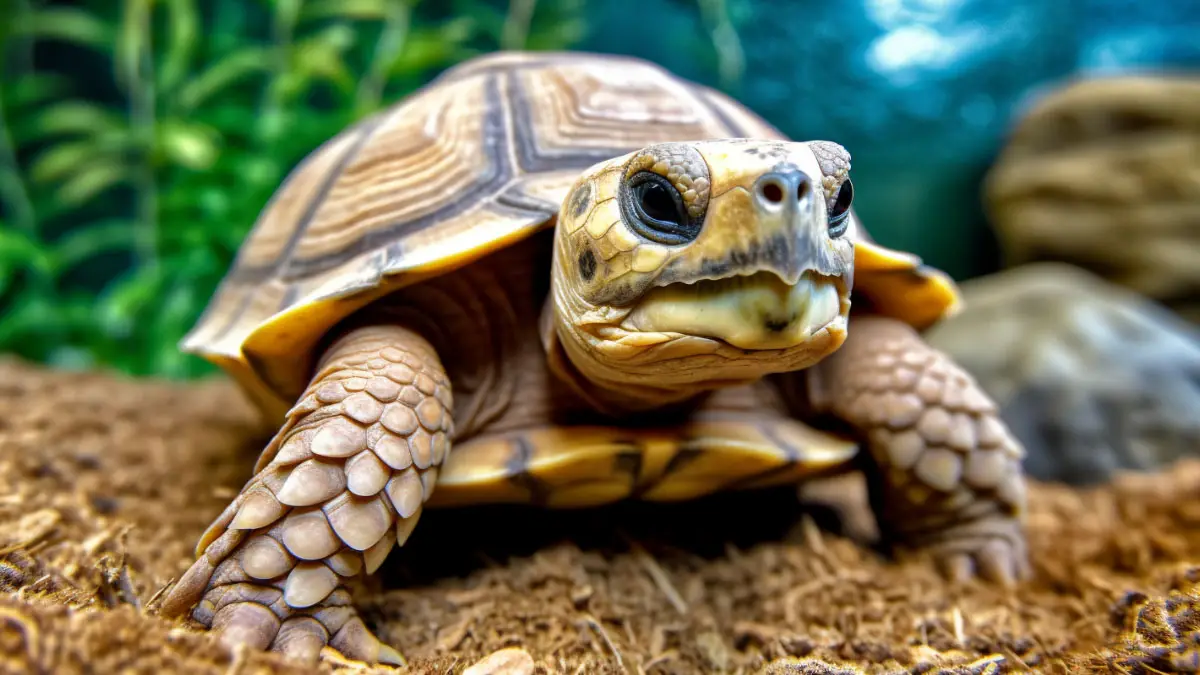Do Russian Tortoises Hibernate? How, When, and How Long?
The Russian tortoise is a one-of-a-kind species in the reptile family. A small, hibernating creature with a lifespan of over 100 years, the tortoise is an intriguing creature.
However, do Russian tortoises hibernate? Yes, indeed. One of their main modes of existence is hibernation. The Russian tortoise is a native species to Central Asia and Russia. And they reside in colder regions where food is scarce. To survive, this issue forces them to occasionally hibernate.
Likewise, hibernation can occur anywhere they have a safe place. And hibernation lasts up to 6 to 9 months (depending on the variation). We have provided a detailed explanation of how the Russian tortoise hibernates in this article. Besides, we have illustrated when and for how long they hibernate.
Do Russian Tortoises Hibernate?
Contents
Yes, Russian tortoises do hibernate when they are in good health. Hibernation journey is a fundamental characteristic of tortoises, and the Russian tortoise is no exception. Tortoises hibernate whether they are free-ranging or kept in captivity because it is their natural process.
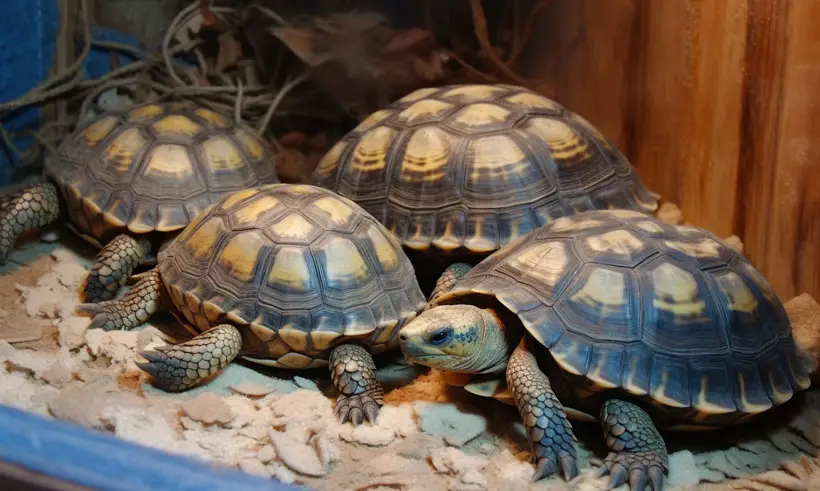
Hibernation offers a number of significant advantages, including the ability to conserve energy in case of emergency. For instance, bad winter weather, freezing rain, or storms for longer periods.
Because Russian tortoises are also found in Central Asia and live in dry environments, these natural disasters frequently affect them. And they always need to be ready for that.
Hibernation process and other facts
However, hibernation is challenging for the tortoise because its body temperature drops significantly during this period. This results in a slowdown in its metabolic process. They experience torpor, a condition characterized by physical or mental inactivity.
Russian tortoises can survive in 70% humidity, compared to the typical hibernation temperature of 40° to 50°F and humidity levels of 50% to 60%. The length of hibernation depends on the condition, age, and health of the tortoise. Hibernation lasts six months for a healthy tortoise. But evidence suggests that they are capable of doing even more.
This behavior in captivity represents only 50% of what they actually do.
How Do Russian Tortoises Hibernate?
Hibernation is a state of deep sleep or inactivity. When Russian tortoises go into hibernation, they enter a state known as torpor. They stop eating and become less active during this time due to the temperature drop.

Before beginning the hibernation phase, let the hibernation types be known.
Hibernation can be divided into two categories. One is indoor and another is outdoor hibernation. the outdoor hibernation that occurs primarily in nature. And the second one is indoors; with the owner’s assistance, this typically occurs in a home or backyard.
Outdoor hibernation:
The Russian tortoise demonstrates remarkable adaptability in its environment during outdoor hibernation. It finds safe havens in the wild, such as tree hollows, rock crevices, or dens, where it can spend the winter dormant. Before hibernation they prepare themselves by eating foods.
Indoor hibernation:
Hibernation that occurs indoors is a little different from outdoor hibernation. Tortoise takes assistance from the owner here. Owner selects location, indoor hibernation occurs in boxes, burrows, or artificially prepared underground spaces.
The hibernation phase of the Russian tortoise can be divided into several stages:
1. Pre hibernation phase
When they sense that the temperature is about to fall, this phase begins. They make an effort to eat well so they can rely on their stored food to survive the hibernation period. Beginning in early October, they gradually stop eating, become less active, and barely move.
2. Hibernation phase
For Russian tortoises, this is the most important stage. They locate a secure location where they can hibernate uninterrupted by the outside world. They are found underground in the wild in burrows. However, there are a few things that the owner should assist the captives with.

Natural method
The natural method is very easy; all you have to do is bury your tortoises in the ground. Make sure the weather doesn’t get to them. They will remain there throughout the hibernation period.
When the time comes, you have to awaken them. However, this approach can be dangerous for countries with climate issues, so use caution.
Box method
The basic idea behind the box method is that you will keep your tortoise in a small box that perfectly fits them. The small box will be placed inside another large box, so you must provide some sort of insulation, such as soil, stone, paper, etc.
You have to continuously keep an eye on their temperature using a thermometer during this time. Since it is forbidden to disturb them, you must exercise extreme caution.
Fridge method
The method involving a refrigerator is safer because frequent temperature fluctuations won’t occur. Here, you must assemble them using a tiny box-like method.
You must place soil and other belongings there. Then place them in the refrigerator and monitor the temperature on a regular basis. Change it as needed according to the weather.
3. Post-hibernation phase
When the weather warms up in May, the tortoise will begin to move. During this stage, they will resume eating food from their surroundings. Initially, they will drink water, followed by other foods.
4. Recovery phase
After hibernation, they will require some time to completely recover. They will once again begin eating regularly during this phase. And they will behave normally and be very active.
When Do Russian Tortoises Start Hibernating, and How Long Do They Hibernate?
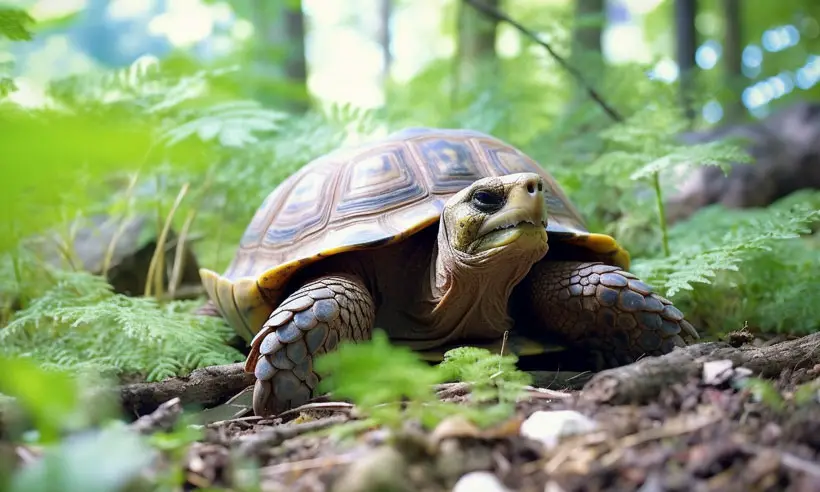
- Russian tortoises begin hibernating at the beginning of October and continue until May. A few tortoises may experience some minor changes during this time, but they will pass quickly.
- The duration of hibernation depends on a number of variables. It covers things like the environment’s temperature and humidity levels as well as the tortoise’s health.
- The typical hibernation period for Russian tortoises lasts 180 to 200 days. However, they can hibernate for up to 9 months at a time (depending on the local climate).
- They can live up to 100 years, making them essentially the longest-living animals. As a result, they are referred to as supercentenarians.
How To Know If The Tortoise Is Hibernating Or Not?
In the wild, it can be very challenging to determine whether a tortoise is hibernating or not. The tortoise moves at a slow pace. They move slowly, eat slowly, and fall asleep slowly.
So, if you see a tortoise that isn’t moving, it’s difficult to tell whether it’s hibernating or sick.
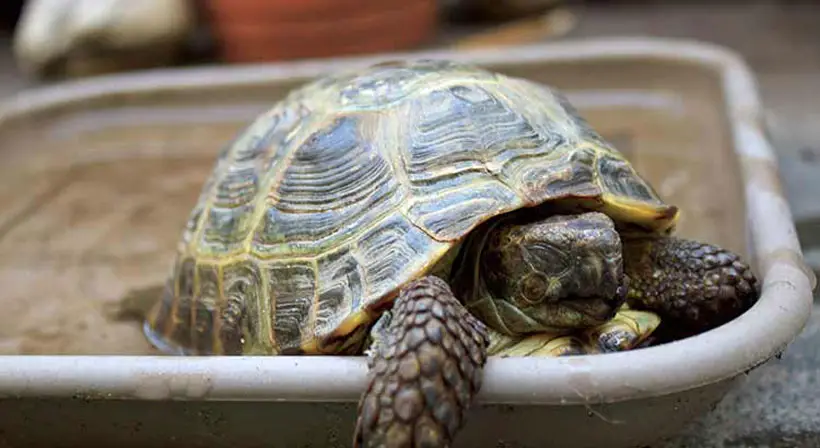
Here are a few points to consider when determining whether or not a tortoise is hibernating.
- Lack of activity or movement: Hibernating tortoises rarely move. If you’ve ever observed a Russian tortoise active in a certain area but not moved from that spot in several days, it may be hibernating (you can tell, surely).
- Pre-hibernation behavior: In order to protect themselves from the cold, Russian tortoises may dig burrows or search out patches of sand or soil. Most likely, if you find them inside, they are hibernating because sick tortoises never enter there.
- Lower body temperature: If you can measure the temperature of a tortoise, you are likely to observe that it is significantly lower. This is also a strong indication that the tortoise is hibernating.
Here are a few additional concrete examples that you can use to determine whether your tortoise is hibernating or not.
1. Breathing
Following the pattern of their breathing, you can determine whether they are hibernating or not. Because their metabolic activity is lower during hibernation, hibernating tortoises breathe more slowly.
2. Change in water bowl level
Verify the water level in the water bowl. Your tortoise isn’t drinking if the water doesn’t change or stays the same. They are showing signs of hibernation, according to this. They hardly even dabble in water during this phase.
3. Moved bedding or soil
Non-hibernating tortoises frequently move, which is why their habitat is occasionally untidy. However, due to their slow metabolism, hibernating tortoises hardly move at all. This is the reason why their bedding or soil have not changed much.
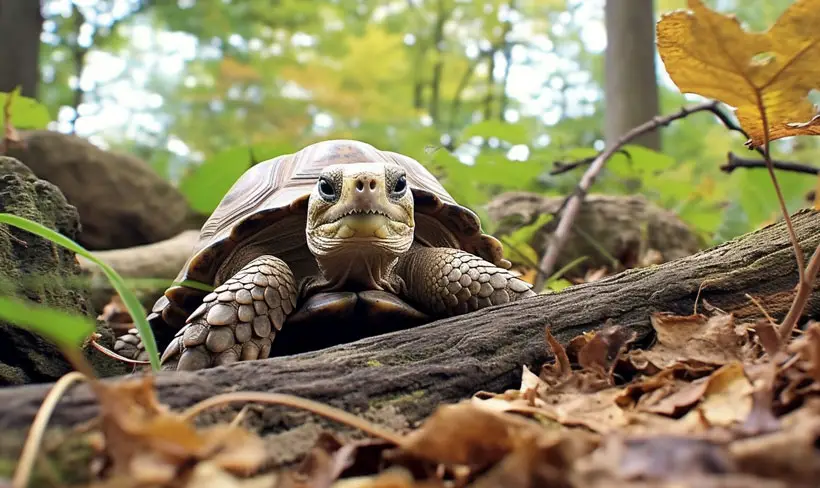
4. Slipping back into its shell as you prod or flip it
As we just mentioned, they hardly move while in hibernation due to their slow metabolism. So, if they withdraw in the shell and do not move even after being poked, they are in a hibernation state.
5. Stretching its limb
Active tortoises frequently stretch their limbs, whereas hibernating tortoises only do so in an emergency. So if your tortoise isn’t stretching, it’s a sign that it’s hibernating.
6. Desperately trying to regain its usual position
Non-hibernating or active tortoises will always try to move and return to their normal position. However, if you notice that their position has changed but they are not attempting to realign it, be sure they’re hibernating.
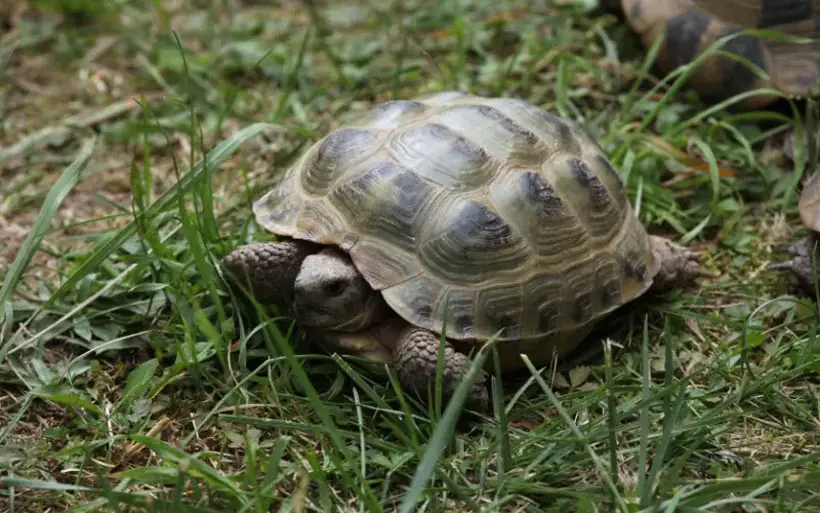
FAQs
Here are some additional questions about Russian tortoise hibernation. Hope this has given you some new ideas.
No, during their hibernation period, Russian tortoises don’t eat anything. The natural process of hibernation occurs when they fall deeply asleep and start to burn stored fat. Therefore, just because they are hibernating does not mean they are starving.
Additionally, never awaken a captive tortoise that is hibernating to give it food. They would suffer a great deal from this.
No, a Russian tortoise does not go into hibernation during the summer. Due to the fact that hibernation is all about avoiding cold or bad weather, Russian tortoises only hibernate at the start of winter.
However, there are some exceptions; for example, some tortoises begin their aestivation, or summer hibernation, in the spring. Except for the time, the process is nearly identical.
First off, you are not permitted to interrupt a hibernating tortoise. If you do, it will negatively affect their immune system and metabolism. They’ll be extremely agile and bored.
And they can only be brought out of hibernation if they started it at the incorrect time. Because they occasionally may fail to recognize the season and begin to hibernate. So as owners follow Russian tortoise care sheets to know what is good for them.
Final Words
In order to respond to the query, “Do Russian tortoises hibernate? How, when, how long?” We can say that Russian tortoises do hibernate. They go into hibernation in the late fall and stay there for 6 to 9 months.
Hibernation is a natural process for animals that live in extreme cold and in areas where food is scarce. Tortoises live in this type of environment, so hibernation is fairly common for them. Russian tortoises typically live in cold climates, which necessitate hibernation.

